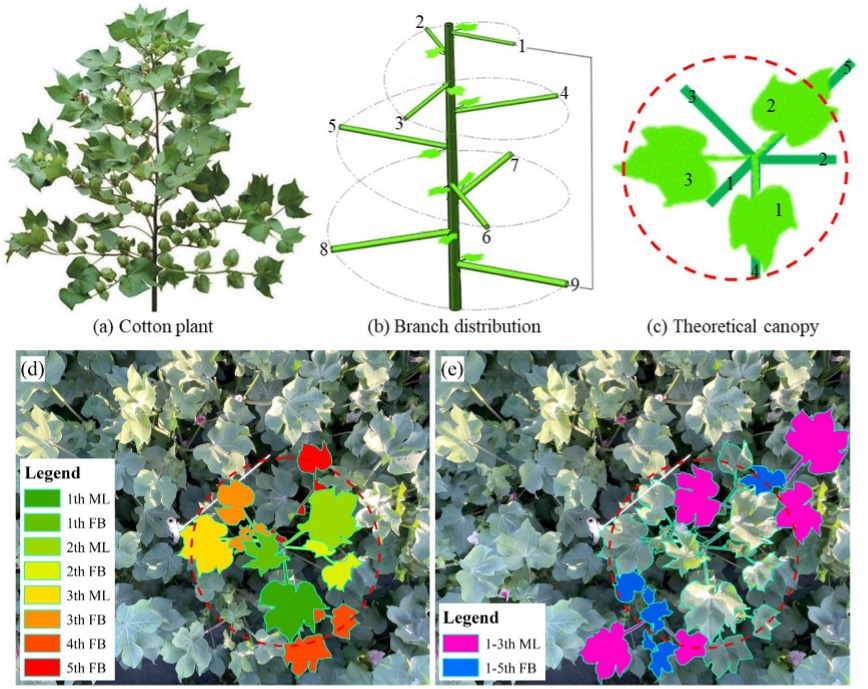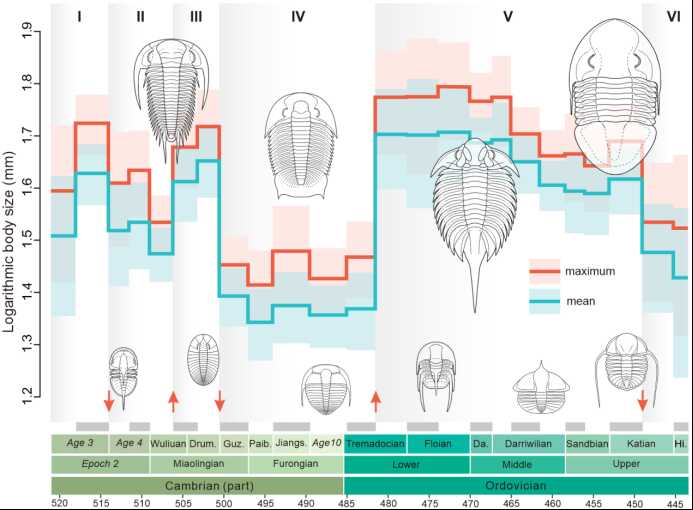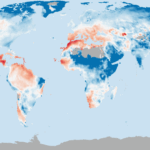2025-04-29 中国科学院(CAS)
 The spatial morphology of cotton plant and the target leaf distribution involved in EPG: (a) cotton plant; (b)branch distribution; (c) theoretical canopy; (d) MLs in L1-L3 and the FLs in L1-L5 of a single cotton plant; (e) MLs in L1-L3 and the FLs in L1-L5 of the cotton plants that intersect with the canopy of (d). (Image by AIR)
The spatial morphology of cotton plant and the target leaf distribution involved in EPG: (a) cotton plant; (b)branch distribution; (c) theoretical canopy; (d) MLs in L1-L3 and the FLs in L1-L5 of a single cotton plant; (e) MLs in L1-L3 and the FLs in L1-L5 of the cotton plants that intersect with the canopy of (d). (Image by AIR)
<関連情報>
- https://english.cas.cn/newsroom/research_news/infotech/202504/t20250429_1042388.shtml
- https://www.sciencedirect.com/science/article/abs/pii/S0168192325001790?via%3Dihub
リモートセンシングによる綿の萎凋病重症度判定のための実用的アプローチ A practical approach for grading cotton Verticillium wilt severity for remote sensing monitoring
Yaohui Gui, Changping Huang, Junru Zhou, Mi Yang, Xiaofeng Qiu, Ze Zhang, Yaokai Liu, Yu Gao, Weiling Shen, Wenjiang Huang, Bhaskar Shrestha, Lifu Zhang
Agricultural and Forest Meteorology Available online: 15 April 2025
DOI:https://doi.org/10.1016/j.agrformet.2025.110559
Highlights
- Stratified classification of cotton leaves is required to assess Verticillium wilt (VW).
- Fruit-branch leaves (FLs) are more sensitive to yield than main-stem leaves (MLs).
- MLs in layers 1–3 and FLs in layers 1–5 effectively indicate yield loss due to VW.
- EPG is a practical method based on eight-position leaves of the top canopy to grade cotton VW severity.
- EPG relates yield loss to VW and applicable to remote sensing monitoring.
Abstract
Disease severity grading is a key prerequisite and major aspect of the integrated management of cotton Verticillium wilt (VW). However, the application of current VW severity grading methods requires an investigation into the disease status of all cotton leaves. It is time-consuming, unrelated to yield, and difficult to reflect the actual severity, especially when it comes to large-scale remote-sensing monitoring. We integrated the cotton VW progression mechanism exploring the potential of leaf VW severity in various leaf types at different layers of cotton to indicate yield loss. Based on all main stem leaves (MLs) in cotton leaf layers 1–3 and fruit branch leaves (FLs) in layers 1–5, we proposed a practical grading method for cotton VW associated with yield loss and suitable for remote sensing monitoring, termed the Eight-Position Grading method (EPG). The results indicated FL exhibited stronger correlation with yield compared to ML, and MLs in layers 1–3 and FLs in layers 1–5 effectively indicated yield loss due to VW. EPG was compared with the technical specifications for VW severity assessment in China (GB) and its associated grading methods, demonstrating performance with a 12 % yield loss gradient while correcting overestimation in GB grading. The remote sensing applicability of EPG was theoretically validated using PROSPECT_D and mSCOPE. Field remote sensing experiment confirmed that EPG achieved preferable accuracies in estimating VW severity (R² = 0.76, RPD = 2.06) and demonstrated a strong correlation with yield (R² = 0.53). This study offers a simple and practical method for scientifically assessing VW severity and estimating yield loss.



